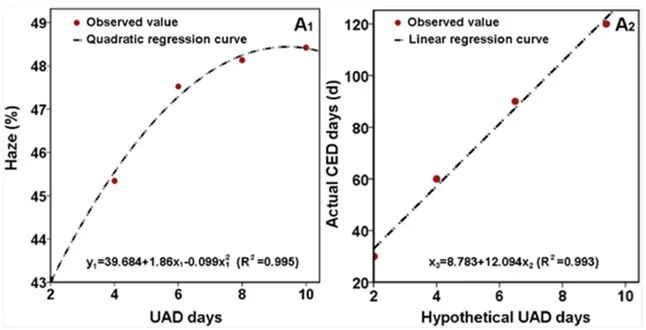Shandong Agricultural University “EST”: the first establishment of a biodegradable plastic film field service life prediction model
Latest News: Mulch film has the function of keeping warm and moisturizing, and is widely used in vegetables, rice, peanuts, garlic and other crops, and has a significant effect of increasing production. In recent years, the development of new mulch films that can be naturally degraded by soil microorganisms to reduce the “white pollution” problem caused by the use of polyethylene mulch films has become a development trend in the field of agricultural mulch film research and development. my country since
Since 2013, the development and application of biodegradable mulch film has been gradually carried out. The initial key performance indicators of PBAT/PLA-based biodegradable mulch film have reached or exceeded the newly revised national standard for polyethylene mulch film and can be completely biodegradable. However, the phenomenon of premature aging and cracking of biodegradable mulch film in the use environment, resulting in crop yield reduction, has attracted more and more attention and has triggered extensive international research. How to quickly predict the service life of biodegradable plastic film has become the focus and difficulty of current research.

Recently, Xu Jing’s research group from the Key Laboratory of Agricultural Film Application, Ministry of Agriculture and Rural Affairs, School of Chemistry and Materials Science, Shandong Agricultural University, based on a short-term indoor accelerated aging test, established for the first time a service life prediction model of biodegradable plastic film, which can accurately predict biodegradation. Long-term service life of mulch in field environment. The research group takes PBAT/PLA biodegradable plastic film as the research goal, using field test and indoor accelerated aging test, combined with advanced analysis technology and statistical theory, to analyze the aging behavior relationship of plastic film in natural environment and special environment, and establish a plastic film Based on the environmental aging evaluation index system, a prediction model for the service life of plastic film was constructed. Professor Xu Jing of the research leading group said that we used the high temperature ultraviolet accelerated aging method to accelerate the aging of the biodegradable plastic film, and tested 8 evaluation indicators (haze, light transmittance, tensile strength) of the biodegradable plastic film during the accelerated aging process. , fracture nominal strain, gel content, polydispersity index, number-average molecular weight, weight-average molecular weight); The relationship between the changes in the physical and chemical properties of the plastic film in special environments, and finally the statistical analysis of the data is carried out to establish a prediction model for the service life of the biodegradable plastic film.

The results of the prediction model show that the best prediction results can be obtained by using the haze value of the biodegradable plastic film as the prediction index. The haze value of accelerated aging for 10 days under high temperature and ultraviolet conditions is different from that of natural aging for 120 days during the actual use in the field. The results were in good agreement (goodness of fit 0.995). Therefore, the establishment of a prediction model for the service life of biodegradable plastic films can quickly predict the actual service life of this type of plastic film in the field, and provide an evaluation method for the safety prediction of the use of biodegradable plastic film products before they are put into the market. The phenomenon of crop yield reduction caused by the aging and cracking of biodegradable plastic film, and improve farmers’ confidence in using biodegradable plastic film, and promote the large-scale production and application of biodegradable plastic film. At the same time, this work can also provide theoretical guidance for the life prediction of other types of biodegradable mulch films.

The research results have been published in the top journals of environmental science, Environment Science &
Technology (SCI District 1, IF=12.154) published online, entitled “Prediction Model of Photodegradation for
PBAT/PLA Mulch Films: Strategy to Fast Evaluate Service
Life”, this study was funded by the National Natural Science Foundation of China, the Key Research and Development Project of Shandong Province and the Natural Science Foundation of Shandong Province. Associate Professor Xie Jiazhuo of Shandong Agricultural University and Associate Researcher Yan Yan of the Institute of Vegetables and Flowers, Chinese Academy of Agricultural Sciences are the co-first authors. Professor Xu Jing and Associate Professor Wang Jing of Shandong Agricultural University are co-corresponding authors.


